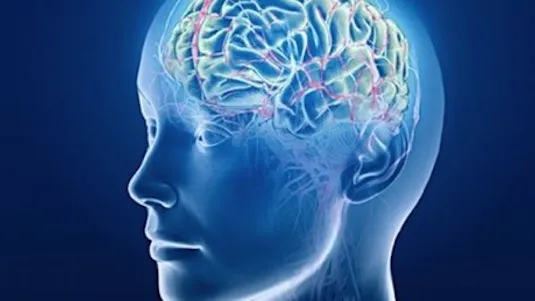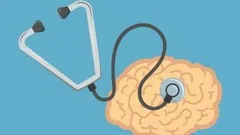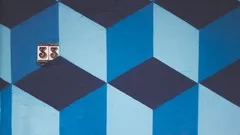
The Brain and Space 
This course explores the relationship between the brain and spatial location, examining how sensory and motor sources create our sense of space and how this influences our cognitive abilities. ▼
ADVERTISEMENT
Course Feature
![]() Cost:
Cost:
Free
![]() Provider:
Provider:
Coursera
![]() Certificate:
Certificate:
Paid Certification
![]() Language:
Language:
English
![]() Start Date:
Start Date:
24th Jul, 2023
Course Overview
❗The content presented here is sourced directly from Coursera platform. For comprehensive course details, including enrollment information, simply click on the 'Go to class' link on our website.
Updated in [April 29th, 2023]
This course is about how the brain creates our sense of spatial location from a variety of sensory and motor sources, and how this spatial sense in turn shapes our cognitive abilities. It is based on the book "Making Space: How the Brain Knows Where Things Are" by Dr. Jennifer M. Groh, Ph.D., Professor of Psychology & Neuroscience; Neurobiology at Duke University. The course material overlaps with classes on perception or systems neuroscience, and can be taken either before or after such classes.
Possible Development Directions:
Dr. Groh's research focuses on differences in how the visual and auditory systems encode location, and how vision influences hearing. Her laboratory has demonstrated that neurons in auditory brain regions are sometimes responsive not just to what we hear but also to what direction we are looking and what visual stimuli we can see. This course will explore these findings and their implications for multi-sensory interactions such as lip-reading and ventriloquism.
Related Learning Suggestions:
This course is suitable for students interested in understanding how the brain processes spatial information and how this affects other aspects of cognition. It is also suitable for those interested in exploring the implications of multi-sensory interactions. Students should have a basic understanding of neuroscience and perception before taking this course.
[Applications]
Those who have taken this course will be able to apply the knowledge gained to understand how the brain creates a sense of spatial location from a variety of sensory and motor sources, and how this spatial sense in turn shapes our cognitive abilities. They will also be able to apply the research of Dr. Jennifer M. Groh, Ph.D. to understand the differences in how the visual and auditory systems encode location, and how vision influences hearing. Additionally, they will be able to apply the research to understand the mechanisms for multi-sensory interactions such as lip-reading and ventriloquism.
[Career Paths]
1. Cognitive Neuroscientist: Cognitive neuroscientists study the neural basis of cognitive processes such as memory, attention, language, and decision-making. They use a variety of methods, including brain imaging, electrophysiology, and behavioral experiments, to understand how the brain works. Cognitive neuroscientists are in high demand in both academic and industry settings, and the field is rapidly growing as new technologies and techniques are developed.
2. Neuropsychologist: Neuropsychologists specialize in the study of the relationship between the brain and behavior. They use a variety of methods, including cognitive tests, brain imaging, and neuropsychological assessments, to understand how the brain affects behavior. Neuropsychologists are in high demand in both clinical and research settings, and the field is rapidly growing as new technologies and techniques are developed.
3. Neuroimaging Scientist: Neuroimaging scientists use a variety of imaging techniques, such as MRI, PET, and fMRI, to study the structure and function of the brain. They are in high demand in both academic and industry settings, and the field is rapidly growing as new technologies and techniques are developed.
4. Robotics Engineer: Robotics engineers design, build, and program robots for a variety of applications. They use a variety of technologies, including sensors, actuators, and computer vision, to create robots that can interact with their environment. Robotics engineers are in high demand in both academic and industry settings, and the field is rapidly growing as new technologies and techniques are developed.
[Education Paths]
Recommended Degree Paths:
1. Neuroscience: Neuroscience is a field of study that focuses on the structure and function of the nervous system. It is an interdisciplinary field that combines elements of biology, psychology, and medicine. Neuroscience is a rapidly growing field, and there are many opportunities for students to pursue a degree in this area. Students can pursue a Bachelor's, Master's, or Doctoral degree in Neuroscience, and can specialize in areas such as cognitive neuroscience, neurobiology, or neuropsychology. With the increasing understanding of the brain and its functions, the demand for professionals in this field is expected to continue to grow.
2. Cognitive Science: Cognitive Science is an interdisciplinary field that studies the nature of the mind and its processes. It combines elements of psychology, computer science, linguistics, philosophy, and neuroscience to understand how the mind works. Students can pursue a Bachelor's, Master's, or Doctoral degree in Cognitive Science, and can specialize in areas such as artificial intelligence, cognitive psychology, or cognitive neuroscience. With the increasing understanding of the brain and its functions, the demand for professionals in this field is expected to continue to grow.
3. Psychology: Psychology is the scientific study of the mind and behavior. It is an interdisciplinary field that combines elements of biology, sociology, and philosophy. Students can pursue a Bachelor's, Master's, or Doctoral degree in Psychology, and can specialize in areas such as clinical psychology, cognitive psychology, or developmental psychology. With the increasing understanding of the brain and its functions, the demand for professionals in this field is expected to continue to grow.
4. Computer Science: Computer Science is the study of computers and their applications. It is an interdisciplinary field that combines elements of mathematics, engineering, and computer programming. Students can pursue a Bachelor's, Master's, or Doctoral degree in Computer Science, and can specialize in areas such as artificial intelligence, computer graphics, or computer networks. With the increasing understanding of the brain and its functions, the demand for professionals in this field is expected to continue to grow.
Course Syllabus
Course Introduction and Vision (Part 1)
This module contains an introduction to the course as a whole (Video 1.1) and an exploration of how our eyes detect light and deduce the location light is coming from (Videos 1.2-1.6). You'll also learn about how scientists from Democritus to Alhazen to Kepler figured this out. The final video for the module involves an experiment to test what happens when special goggles turn the world upside down (Video 1.7). I'll show experiments frequently throughout this course -- they are how we know what we know. This module’s quiz is ungraded and available to both auditors and certificate students. Consider it a sample of the style of question in the quizzes for the remaining modules, and an opportunity to determine if you’d like to pursue a certificate for this course.Vision (Part 2), the Body, and Neural Signals
In this unit, we cover the visual scene in 3D - the many clues to depth. We then turn to body senses (position and touch) and how our brains detect the configuration of our own bodies. Along the way, we cover the resting membrane potential, the action potential, and how they arise. Finally, we bring vision and the body together, and throw some beanbags at a visual target while wearing prisms! This material is covered in Making Space, chapters 2 and 3.Brain Maps
In this unit, we turn to the brain and how it uses the spatial position of neurons within the brain to organize information about the spatial position of stimuli in the world (Making Space chapter 4). You'll learn about how we identify where one object ends and another begins, what a receptive field is, and how some neurons are sensitive to edges and the boundaries of objects. Maps occur in both visual cortex and body (somatosensory) cortex, and these maps may be responsible for various "phantom" sensations (examples from normal vision, patients with body part amputations, and electrical stimulation experiments).Sound and Brain Representations
In module 4, we turn to the fascinating puzzle of how we deduce sound location--a process that requires quite a bit of detective work. Our brains piece together multiple types of clues, including subtle differences in timing, loudness, frequency content, and how sounds appear to change as we turn our heads. Because our ears don't form images of sounds, our brains don't have to use maps to encode sound location. The second half of the videos this module concern alternative forms of brain representation, how the brain translates between different types of representation, and what we know about brain representations for sound location. The material is covered in chapter 5, "Sherlock Ears" and chapter 6, "Moving with Maps and Meters", in Making Space. Be forewarned, there are about 70 minutes of video this module, as compared to previous modules' 50-60 minutes. After watching the full set, you'll see why these videos are grouped together as a unit. To make things more manageable, we've broken the quiz into two parts; that way, you can get feedback on one part before moving on to the next, if you like.Reference Frames and Navigation
This module we turn to how spatial locations are defined, and discuss the concept of a reference frame. Initially, reference frames are quite different for visual, auditory, and somatosensory information. Visual location is defined with respect to the eyes, whereas sound locations are detected with respect to the head and ears, and tactile locations are detected based on body surface position. As you'll see, the brain transforms these signals into new reference frames to facilitate interactions between these sensory systems. We then consider space on a larger scale, and ask how we know where we are and how we navigate from one place to another. Knowledge of self-motion relies in part on the vestibular system, our sense of balance. The vestibular system works in concert with vision and motor systems to update our sense of position and keep us from getting lost. This module's material is covered in chapters 7, "Your Sunglasses Are in the Milky Way", and 8, "Going Places" of Making Space.Memory and Cognition
In this final module of the course, we build several important links between the sense of space and other kinds of cognition. Videos 6.1-6.5 concern the relationship between space and memory. Memory is reflected in multiple different kinds of neural mechanisms and involves multiple brain regions. The memory and spatial functions of these mechanisms and brain regions overlap. Video 6.5 in particular features work by John O'Keefe concerning response patterns known as "place fields" in the hippocampus, and work by May-Britt and Edvard Moser concerning grid cells. This seminal work was recognized by the 2014 Nobel Prize in Medicine and Physiology. Videos 6.6-6.9 turn to thought more generally, and present a series of theories and experiments that suggest that the brain is actually using sensory and motor structures to think and reason. Thus, our brain systems for space may be engaged in a wide set of mental functions, which are shaped by the multiple purposes of this neural infrastructure. This module's material is covered in chapters 9, "Space and Memory", and 10, "Thinking about Thinking" of Making Space. I hope you enjoy this synthesis of all you have learned and what it means!Pros & Cons

Simple and concise teaching.

Real life examples given.

Well structured and clearly communicated.

Challenging yet manageable.

Interesting and informative.

Too much information before quiz.

Lack of clarity to make assumptions.

Baseline grasp of neurobiology needed.

Statements on replication lacking.

Casual learners may struggle.
Course Provider

Provider Coursera's Stats at AZClass
Discussion and Reviews
0.0 (Based on 0 reviews)
Explore Similar Online Courses

ADP Accountant Connect Certification

CCNP Route 642-902 Implementing Cisco IP Routing

Python for Informatics: Exploring Information

Social Network Analysis

Introduction to Systematic Review and Meta-Analysis

The Analytics Edge

DCO042 - Python For Informatics

Causal Diagrams: Draw Your Assumptions Before Your Conclusions

Whole genome sequencing of bacterial genomes - tools and applications

Control Your Subconscious Mind: Neuroscience Hidden Secrets

Perform an Excellent Neurological Bedside Exam

Brain and Behavioral Science Fundamentals
 Related Categories
Related Categories
Quiz
 Submitted Sucessfully
Submitted Sucessfully
1. What is the title of Dr. Groh's book?
2. What is the name of the center Dr. Groh is a faculty member of?
3. What is the main focus of Dr. Groh's research?


Start your review of The Brain and Space